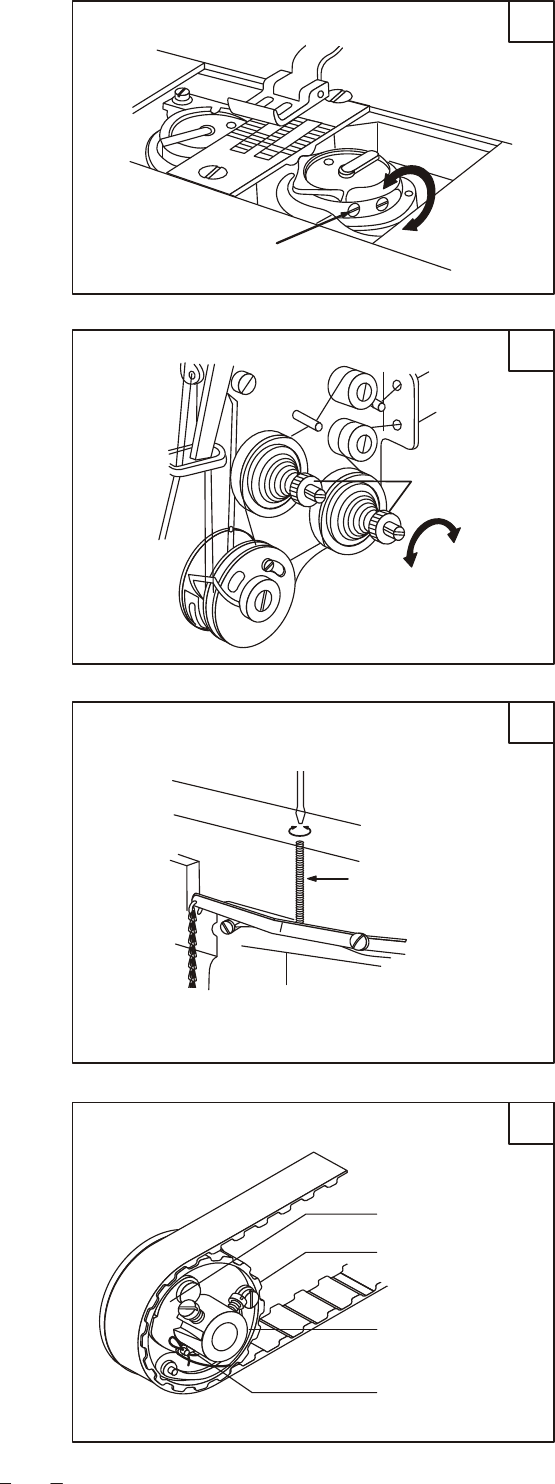
7
18
21
19
20
A. If the stitch seam shows as Fig. 17B, indicates
that the needle thread tension is too tight or the
bobbin thread tension is too loose. Please turn the
thread tension nut counter-clockwise to release the
needle thread pressure; or turn the bobbin lace
adjusting screw with a screwdriver to increase the
bobbin thread tension.( See Fig. 18,19)
B. If the needle thread tension is too loose or the
bobbin thread tension is too tight shown as Fig. 17C.
Please turn the thread tension nut clockwise to
increase the needle thread pressure; or turn the
bobbin lace adjusting screw with a screwdriver to
decrease the bobbin thread tension. (See Fig. 18,19)
For special sewing with special thread, the tension
needed can be obtained by adjusting the power and
stroke of the thread take-up spring.
.
.
.
The pressure of presser foot should be adjusted
according to the thickness of the sewing materials. If
stitch on heavy weight materials, the pressure should
be increased by turning the pressure adjusting screw
on the back of machine head clockwise, on the
contrary, turn it counter-clockwise. .
2. Adjust the pressure of presser foot (Fig.20)
The function of safety clutch device is to prevent the
hook and toothed belt from being damaged when the
needle thread is drawn into the hook for abnormal
load during the operation. .
3. Adjust the safety clutch device
3.1 The function of safety clutch device (Fig.21)
A. When the safety clutch is functioning, the toothed
belt will remove the load and the hook shaft will stop
rotating, only the upper shaft still rotates, and the
machine stops work.
B. Clean off the needle thread which is draw into the
hook.
C. Turn the toothed belt shaft by hand to check if the
hook shaft can turn smoothly, then reset the safety
clutch device.
.
.
.
Adjusting screw
Loosen
Tighten
Nut
Increase
Decrease
Increase
Decrease
Pressure adjusting
screw
Safety clutch device
Toothed-belt pulley
Shaft
Stopper


















